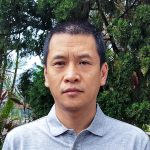China will promote “rural vitalisation” and accelerate the modernisation process in rural regions this year guided by the government’s No.1 central document, released on February 13.
The document calls for enhanced efforts to ensure food security, to consolidate and expand the achievements of poverty alleviation, to speed up the construction of a strong agricultural sector, and to build livable, business-friendly and beautiful villages.
The document is released annually by the Communist Party of China Central Committee and State Council. A Xinhua report notes that the document is the first policy statement released each year and can be seen as an indicator of policy priorities. It has focused on agriculture and rural areas for the past 20 years.
The document outlines 9 tasks and 33 key points. China Energy News and China Environment News highlighted several of the main points for energy and ecological protection. These include protecting cultivated land and preventing heavy metal pollution; expanding “marine pastures” and deep-sea aquaculture; issuing regulations on ecological compensation; piloting green agriculture; developing renewable energy in rural areas, and promoting the sale of new energy vehicles in the countryside.
In addition, Article 25 of the document proposes to “improve the rural living environment”, which includes actions to clean villages, promote domestic sewage treatment projects, improve waste classification and reduction, and promote local utilisation of organic waste.
According to a notice issued by the Ministry of Finance in 2022, the total budget for rural environmental improvement in 2023 is just 2 billion yuan (about US$290 million), a decrease on the 4 billion yuan available in 2022. Some analysts believe the drop is because many domestic sewage treatment facilities in rural areas have been idled. The scattered nature of rural households means that centralised sewage treatment requires large pipe networks to collect the sewage. However, the current design capacity of many sewage treatment plants is higher than the discharge collected. Data from one study shows the sewage treatment capacity of the plants in operation is less than 66% of the design capacity. This has led to high operating costs for the sewage treatment plants, making them sit idle.
An investigation by the National People’s Congress previously pointed out that the government emphasised the construction of rural sewage treatment facilities while the operation and maintenance were not taken seriously.
The central government is expected to focus on pilot projects to find suitable solutions to the rural environment and not make large-scale investments for now.
Read China Dialogue’s earlier report on the rural environment in China.
